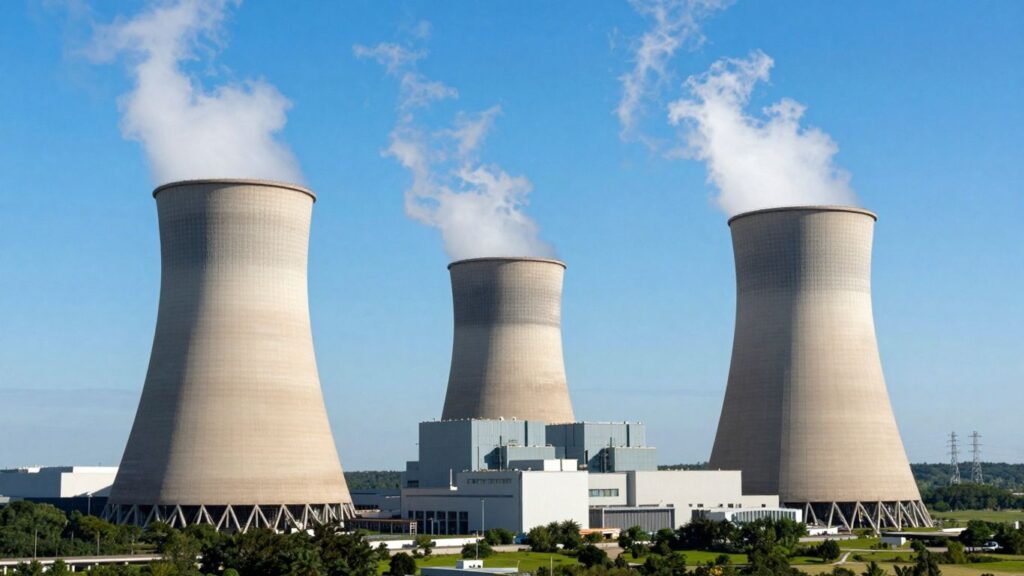Global interest in Small Modular Reactors (SMRs) is surging, driven by increasing energy demands, climate goals, and significant international initiatives. The technology, promising lower costs and greater flexibility than traditional nuclear power, is seeing accelerated development and deployment discussions worldwide, with a notable focus on knowledge sharing and regulatory advancement.
Key Takeaways
- Growing Global Interest: SMRs are experiencing a resurgence in interest from governments and industry to meet clean energy demands.
- IAEA’s Expanding Role: The International Atomic Energy Agency (IAEA) is actively promoting SMR knowledge through workshops and initiatives across various regions.
- Market Expansion: The Nuclear Energy Agency (NEA) reports a significant increase in SMR designs undergoing licensing and pre-licensing processes globally.
- Financing and Development: While financing remains a challenge, particularly in regions like Africa, SMRs offer a potentially more accessible entry point for nuclear power.
- International Collaboration: Key nations like the UK and US are exploring closer cooperation on SMR development.
IAEA’s Global SMR Initiative
The IAEA is actively expanding its global initiative to foster knowledge and understanding of Small Modular Reactors (SMRs). Recent workshops, such as the "SMR School" held in Bangkok, Thailand, have brought together policymakers, regulators, and industry representatives from Asia, the Middle East, and Europe. These sessions aim to inform stakeholders about the potential role of SMRs in national energy mixes, covering technical, regulatory, economic, and infrastructure aspects.
The IAEA’s Director General, Rafael Mariano Grossi, has highlighted the growing momentum behind nuclear energy, particularly in Asia, where countries are evaluating SMRs as part of their clean energy strategies. The agency’s efforts, including the SMR Platform and the Nuclear Harmonization and Standardization Initiative (NHSI), are designed to support countries in building the necessary infrastructure for SMR development and oversight.
Expanding SMR Development and Deployment
Data from the Nuclear Energy Agency (NEA) reveals a significant expansion in SMR development, with 74 designs analyzed in its latest dashboard. Of these, 51 are involved in pre-licensing or licensing activities in 15 countries, marking a substantial increase since 2023. This growth reflects a tangible progress in moving SMR concepts closer to real-world projects, with seven designs already operational or under construction.
Proponents envision SMRs as a more agile alternative to large-scale nuclear plants, capable of being deployed where energy is needed and utilizing factory-fabricated components to reduce costs. The diversity of SMR designs offers a range of options for various applications, from powering data centers to supporting industrial heat production. However, this diversity also presents challenges for regulators and supply chains, necessitating efforts to streamline global processes and promote standardization.
Addressing Financing and International Cooperation
Financing for nuclear power projects, especially in regions like Africa, remains a significant hurdle. However, SMRs are seen as a potential solution due to their lower upfront investment requirements and greater flexibility. International collaboration is also on the rise, with leaders like UK Prime Minister Keir Starmer advocating for closer cooperation with the United States on SMR technology, recognizing the mutual benefits of shared expertise and development.
The increasing focus on SMRs is driven by several strategic factors, including rising electricity demand, energy security imperatives, and national goals to reduce carbon emissions. As the technology matures and international support grows, SMRs are poised to play a more prominent role in the global energy transition.
Sources
- IAEA Expands Global Initiative to Boost Knowledge of SMRs, IAEA.
- Small modular reactors are gaining steam globally.…, Canary Media.
- Nuclear Energy Agency (NEA) – New NEA Small Modular Reactor Dashboard edition reveals global expansion of SMR
deployment, Nuclear Energy Agency (NEA). - Financing For Nuclear Power In Africa ‘A Challenge’, But SMRs Might Offer Solution, NucNet.
- UK, US should work together on small modular reactors, Starmer says, Reuters.












